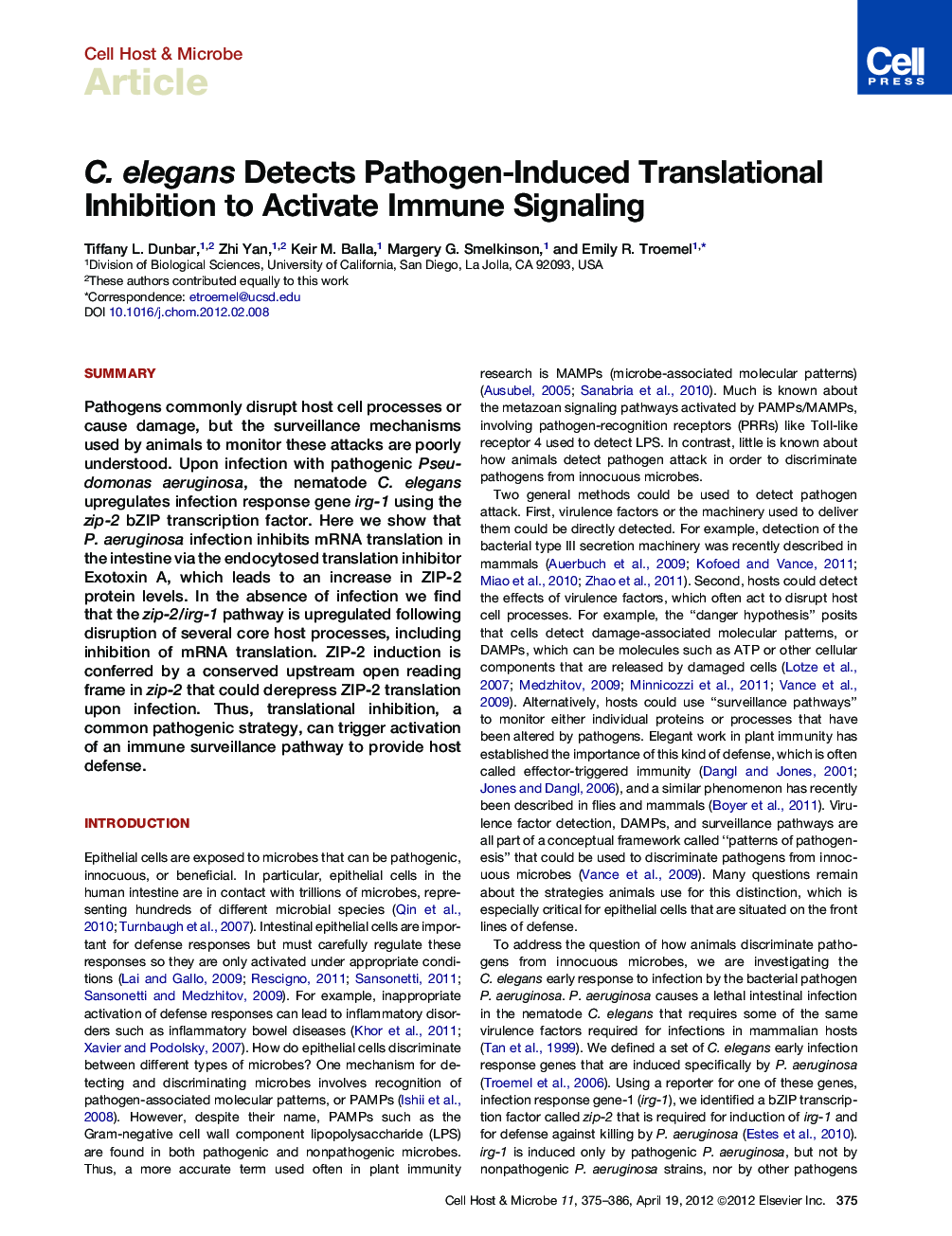| کد مقاله | کد نشریه | سال انتشار | مقاله انگلیسی | نسخه تمام متن |
|---|---|---|---|---|
| 4361434 | 1301386 | 2012 | 12 صفحه PDF | دانلود رایگان |

SummaryPathogens commonly disrupt host cell processes or cause damage, but the surveillance mechanisms used by animals to monitor these attacks are poorly understood. Upon infection with pathogenic Pseudomonas aeruginosa, the nematode C. elegans upregulates infection response gene irg-1 using the zip-2 bZIP transcription factor. Here we show that P. aeruginosa infection inhibits mRNA translation in the intestine via the endocytosed translation inhibitor Exotoxin A, which leads to an increase in ZIP-2 protein levels. In the absence of infection we find that the zip-2/irg-1 pathway is upregulated following disruption of several core host processes, including inhibition of mRNA translation. ZIP-2 induction is conferred by a conserved upstream open reading frame in zip-2 that could derepress ZIP-2 translation upon infection. Thus, translational inhibition, a common pathogenic strategy, can trigger activation of an immune surveillance pathway to provide host defense.
Graphical AbstractFigure optionsDownload high-quality image (282 K)Download as PowerPoint slideHighlights
► Disruption of translation and other host processes activates zip-2 immune signaling
► P. aeruginosa uses Exotoxin A to block translation in the C. elegans intestine
► Endocytosis is required for C. elegans transcriptional response to infection
► zip-2 5′UTR contains a uORF that confers infection-mediated increase in ZIP-2 protein
Journal: - Volume 11, Issue 4, 19 April 2012, Pages 375–386